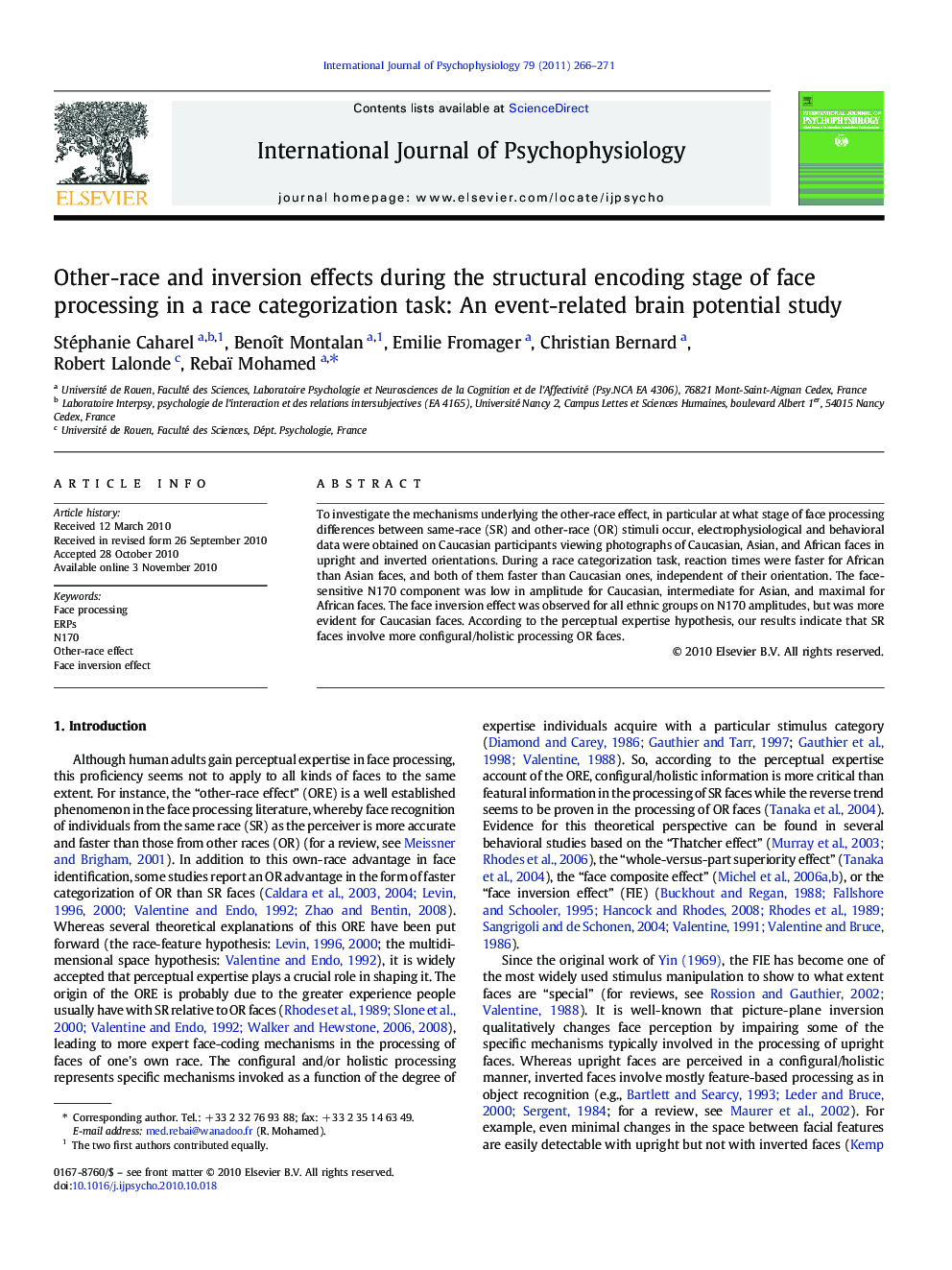| Article ID | Journal | Published Year | Pages | File Type |
|---|---|---|---|---|
| 930318 | International Journal of Psychophysiology | 2011 | 6 Pages |
To investigate the mechanisms underlying the other-race effect, in particular at what stage of face processing differences between same-race (SR) and other-race (OR) stimuli occur, electrophysiological and behavioral data were obtained on Caucasian participants viewing photographs of Caucasian, Asian, and African faces in upright and inverted orientations. During a race categorization task, reaction times were faster for African than Asian faces, and both of them faster than Caucasian ones, independent of their orientation. The face-sensitive N170 component was low in amplitude for Caucasian, intermediate for Asian, and maximal for African faces. The face inversion effect was observed for all ethnic groups on N170 amplitudes, but was more evident for Caucasian faces. According to the perceptual expertise hypothesis, our results indicate that SR faces involve more configural/holistic processing OR faces.
Research Highlights► Faster categorization of OR (Asian and African) than SR (Caucasian) faces. ► Increased N170 amplitudes to OR as opposed to SR faces in upright orientation. ► Larger FIE on N170 amplitudes for SR than OR faces. ► Individuals develop perceptual expertise at processing faces of their own race.
